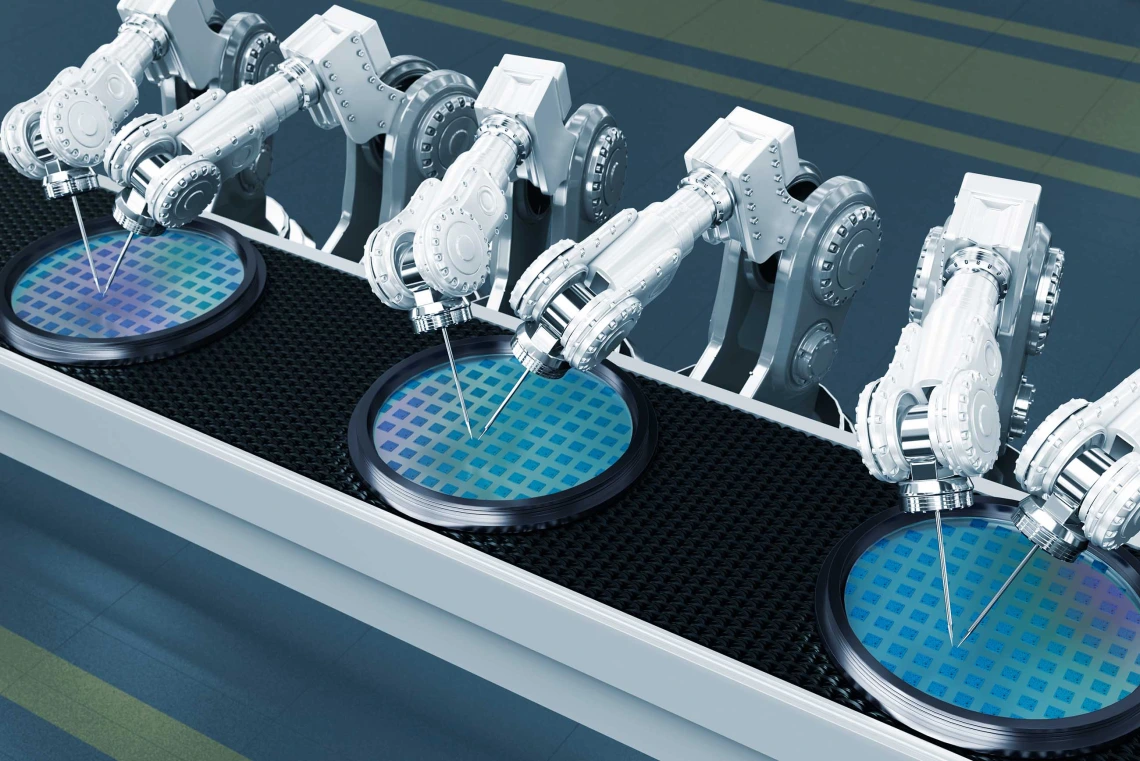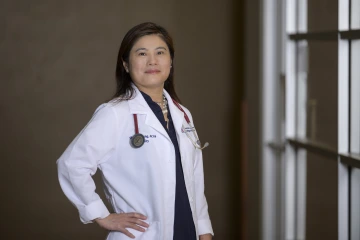Leveraging research, industry expertise to speed biomedical breakthroughs
The new Center for Health and Technology pools assets throughout Arizona for widespread wins in device development.

Collaborators in the University of Arizona Center for Health and Technology will produce next-generation devices that incorporate practical insights.
Photo by Yuichiro Chino via Getty Images
Research into chip-based wearable and implantable devices is showing great potential to improve health care through real-time data collection, remote monitoring and professional support amid a workforce shortage. The technology these devices rely upon, though, typically lags generations behind that used in consumer electronics.

Center for Health and Technology Co-director Shu-Fen Wung, a professor of nursing, says nurses’ holistic view of patient care makes their input crucial in medical device development.
Photo Noelle Haro-Gomez, U of A Health Sciences Office of Communications
At the University of Arizona, a new center is uniting researchers and industry in developing advanced biomedical technologies using the same infrastructure that powers the state’s semiconductor industry. The Center for Health and Technology, or CHaT, is a joint initiative of the U of A College of Nursing and the U of A College of Engineering that will launch this fall.
“It’s not your regular interdisciplinary team. Nurses rarely have this opportunity to work with engineers,” said CHaT Co-director Shu-Fen Wung, PhD, RN, a professor of nursing and member of the BIO5 Institute. “Nurses work at the front lines of health care, and we care about a person as a whole. This humanistic perspective is particularly crucial for collaborations with engineering.”
Nurse-scientists will collaborate with engineers and industry partners to focus on the most critical products needed to address unmet health care challenges. CHaT will accelerate the development of devices and ensure that new products incorporate practical knowledge from nursing professionals.
“This is what the industry and the community need right now,” said CHaT Co-director Janet Roveda, PhD, a professor of electrical and computer engineering and BIO5 Institute member. “Companies truly want to understand how this can work in real environments and applications.”
The center will also serve as a central hub for educating students to work across engineering and health sciences disciplines. Future engineers will benefit from access to the latest biomedical training, and students bound for nursing and related professions will graduate with specialized knowledge of technology application.
Today’s solutions, tomorrow’s transformations
Devices such as sleep trackers and glucose monitors use sensor systems that incorporate computer chips. A sensing element detects physical changes; a semiconductor chip converts those signals into electrical output and processes the information. An increasing number of these devices also transmit information wirelessly. They combine multiple functions – such as processing and communication – into a single compact device.
Roveda is a leading U of A inventor of sensing devices with applications including disease detection and respiration monitoring. These proof-of-concept inventions employ processes used in semiconductor manufacturing that emphasize miniaturization, scalability and precise fabrication.
In contrast, biotech companies must obtain Food and Drug Administration approval for medical devices and produce at commercial scale for profitability. These hurdles mean that by the time a company releases a medical device, often it is already less powerful, less energy-efficient and bulkier than what would be possible using the latest chips.
“On average, it takes about seven years for new chip technology to be integrated into health care sensors,” Roveda said.
At CHaT, researchers are positioned to collaborate with tech companies and other partners to prototype, fabricate and test advanced sensor devices. CHaT researchers will co-develop ideas and move inventions through clinical testing quickly and comprehensively. The CHaT plan incorporates simulation testbeds – realistic facilities already in use for U of A teaching and research.
“Companies are looking to enter the home care space. We are creating a great opportunity for them to work with us,” Wung said.
These companies bring to CHaT large-scale, advanced fabrication facilities where initial prototypes can be produced. By employing the cleanroom environments and techniques used to build semiconductor-based products, including smartphones and electric vehicles, the center’s collaborators can improve medical device scalability and ultimately reduce per-unit costs.
Partnering companies stand to not only develop more relevant and efficient products but also take better-validated devices to the FDA for approval. That, Roveda said, helps them realize investment returns quickly and with less risk.
Roveda, who directs the lead site for the Center to Stream Healthcare in Place, or C2SHIP, a National Science Foundation Industry/University Cooperative Research Centers Consortium, said some of the companies currently working with C2SHIP will become CHaT partners. Additionally, Roveda and Wung are engaging with businesses that have significant presences in Arizona or are interested in expanding into the state. Both are also affiliated with the U of A Center for Semiconductor Manufacturing and are paving a path to collaboration.
In addition to advancing electronics, CHaT researchers will refine methods for using artificial intelligence to analyze and apply the vast amounts of data the devices generate. Together, improved hardware and smarter data use could help mitigate a health care workforce shortage – one that federal and trade organizations project will continue for at least the next decade.
Arizona needs 24% more nurses to meet demand in 2025, according to data from the U.S. Department of Health and Human Services. AI could provide care suggestions, identify patients who are at risk, and answer some patient questions that would otherwise require a nurse’s attention, for example.
“Technology should enhance human work, especially in the realm of nursing care provided to individuals. I deeply believe that technology can greatly support nursing professionals,” Wung said. “If nurses are not at the forefront of discussions about the technologies that could help them engage with families and those in need care, we’ve missed an important opportunity.”
Experts
Shu-Fen Wung, PhD, RN
Professor, College of Nursing
Co-director, Center for Health and Technology
Director, Nursing-Engineering Initiatives, College of Nursing
Professor, Electrical and Computer Engineering
Member, BIO5 Institute
Janet Roveda, PhD
Litton Industries John M. Leonis Distinguished Professor of Electrical and Computer Engineering
Co-director, Center for Health and Technology
Director, Center to Stream Healthcare In Place
Professor, Biomedical Engineering
Professor, College of Nursing
Member, BIO5 Institute
Contact
Katy Smith
U of A Health Sciences Office of Communications
520-271-3780, katysmith@arizona.edu

